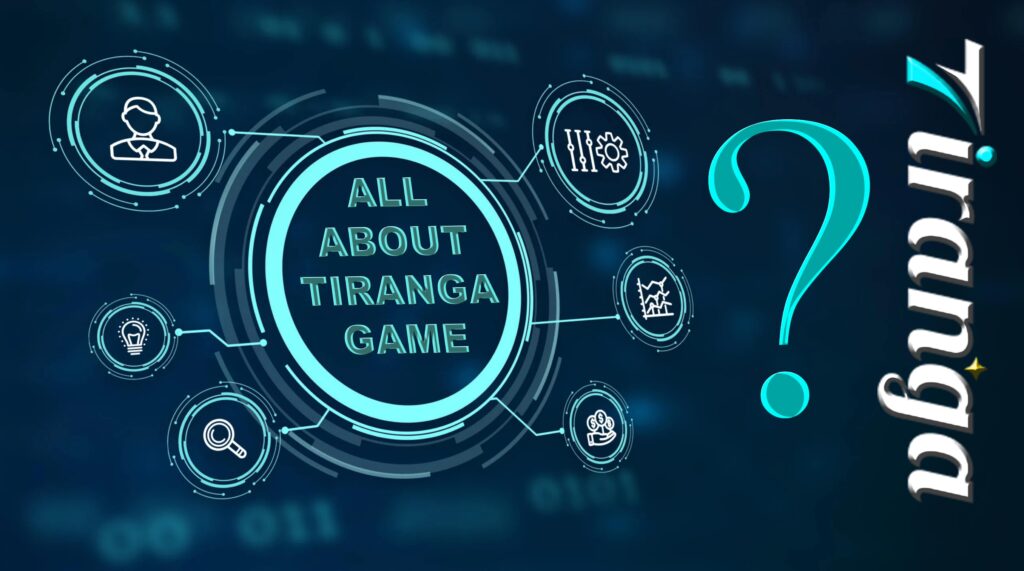
In the rich tapestry of India’s cultural heritage, various elements play a crucial role in shaping the nation’s identity. Among these, the Tiranga Game stands out as a creative and engaging way to celebrate and explore India’s cultural legacy. This game, inspired by the national flag of India, provides not only entertainment but also an educational experience that honors India’s diverse traditions and historical significance.
Understanding the Tiranga Game
Origins and Inspiration
The Tiranga Game is a unique educational and recreational activity that draws its inspiration from the national flag of India, known as the Tiranga. The flag, which features three horizontal stripes of saffron, white, and green with a navy blue Ashoka Chakra in the center, is a symbol of India’s freedom, unity, and diversity. The game uses the colors and symbolism of the flag to create an engaging experience that combines fun with learning.
Objective of the Game
The primary objective of the Tiranga Game is to familiarize participants with the significance of the Indian flag while encouraging teamwork, critical thinking, and creativity. Through various activities and challenges, players learn about the history, values, and cultural heritage associated with the flag. The game is designed to be inclusive, making it suitable for individuals of all ages and backgrounds.
How the Tiranga Game Works
Game Setup
To start the Tiranga Game, players are divided into teams and provided with materials that represent the colors of the Indian flag: saffron, white, and green. These materials can include colored papers, fabric, or even digital representations. The game is often set up with various stations or challenges that correspond to different aspects of India’s cultural heritage.
Game Phases
-
Historical Quiz: The first phase typically involves a quiz focused on the history of the Indian flag and its significance. Questions may cover the flag’s evolution, the meaning of its colors, and notable figures associated with its creation. This phase helps participants gain a deeper understanding of the flag’s historical context.
-
Creative Challenge: In this phase, teams are tasked with creating a representation of the Indian flag using the materials provided. This could be a physical model or a digital artwork. The emphasis is on creativity and accuracy, allowing participants to express their understanding of the flag’s design and symbolism.
-
Cultural Exploration: This phase involves exploring various cultural elements related to the flag. Teams might engage in activities such as traditional Indian dance, music, or storytelling. These activities highlight the diversity of India’s cultural heritage and its connection to the values represented by the flag.
-
Team-building Exercises: The final phase includes team-building exercises that require collaboration and problem-solving. These exercises are designed to reinforce the importance of unity and teamwork, which are central themes of the Indian flag.
Scoring and Feedback
Points are awarded based on performance in each phase, with additional consideration given to creativity, accuracy, and teamwork. At the end of the game, feedback is provided to highlight areas of strength and opportunities for improvement. This feedback session also serves as a reflection on the lessons learned about India’s cultural heritage and the symbolism of the flag.
Benefits of the Tiranga Game
Educational Value
The Tiranga Game offers significant educational value by providing a hands-on approach to learning about India’s national symbols. It helps participants understand the historical and cultural significance of the Indian flag in an interactive and memorable way. By engaging with the flag’s design and symbolism, players gain insights into India’s rich heritage and the values it represents.
Fostering Unity and Teamwork
One of the key benefits of the Tiranga Game is its ability to foster unity and teamwork. The game’s structure emphasizes collaboration and collective effort, mirroring the themes of unity and diversity represented by the Indian flag. Participants learn to work together towards common goals, which enhances their interpersonal skills and builds a sense of community.
Encouraging Creativity
The creative challenges within the Tiranga Game encourage participants to think outside the box and express their understanding of the flag’s symbolism in innovative ways. This not only makes the learning process more engaging but also helps develop problem-solving and artistic skills.
Celebrating Cultural Diversity
The Tiranga Game provides a platform for celebrating India’s cultural diversity. Through various activities and challenges, participants are exposed to different aspects of Indian culture, including its traditional arts, music, and dance. This exposure fosters a greater appreciation for the country’s rich heritage and encourages cultural exchange.
Conclusion
The Tiranga Game is more than just a recreational activity; it is a meaningful way to celebrate and explore India’s cultural heritage. By incorporating elements of history, creativity, and teamwork, the game provides a comprehensive and engaging experience that honors the significance of the Indian flag. It serves as a reminder of the values of unity, diversity, and freedom that the flag represents, while also offering a fun and interactive way for people of all ages to connect with India’s rich cultural legacy. As such, the Tiranga Game stands out as a valuable tool for education, celebration, and community building, making it a cherished activity for those who wish to honor India’s heritage in a dynamic and enjoyable manner.